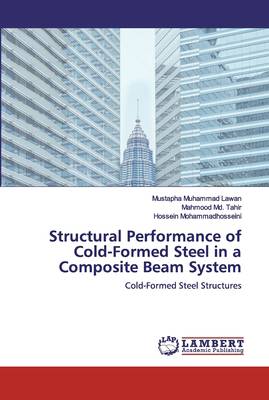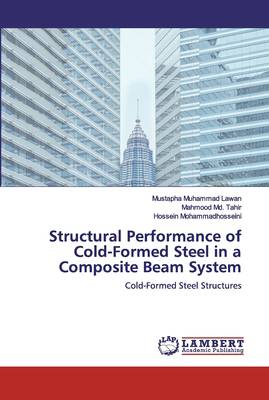
- Afhalen na 1 uur in een winkel met voorraad
- Gratis thuislevering in België vanaf € 30
- Ruim aanbod met 7 miljoen producten
- Afhalen na 1 uur in een winkel met voorraad
- Gratis thuislevering in België vanaf € 30
- Ruim aanbod met 7 miljoen producten
Zoeken
Structural Performance of Cold-Formed Steel in a Composite Beam System
Mustapha Muhammad Lawan, Mahmood MD Tahir, Hossein Mohammadhosseini
Paperback | Engels
€ 90,45
+ 180 punten
Omschrijving
In steel and construction industry, hot-rolled steel (HRS) section and cold-formed steel (CFS) section are two distinguished steel sections that are used. However, among the two steel sections, HRS is the most familiar among building contractors and engineers. The use and application of CFS sections started in the United States of America (USA) and Great Britain for decades, mainly for non-structural purposes only. Though, the use of CFS is expanding in the present era of building constructions. However, in the mid- 20th century, the structural use of CFS sections began especially for commercial and industrial building constructions. Recently, the use of CFS sections as an alternative material for roof structure keep increasing due to the quality assurance of steel structures. CFS sections are lightweight material produced by bending a flat steel sheet at room temperature into a desired shape that can withstand more load than the flat sheet itself; and are suitable for building construction owing to their high structural performance. The use of composite systems comprising of concrete and hot-rolled steel sections is well established as observed in current design codes.
Specificaties
Betrokkenen
- Auteur(s):
- Uitgeverij:
Inhoud
- Aantal bladzijden:
- 296
- Taal:
- Engels
Eigenschappen
- Productcode (EAN):
- 9786200534361
- Verschijningsdatum:
- 16/01/2020
- Uitvoering:
- Paperback
- Formaat:
- Trade paperback (VS)
- Afmetingen:
- 152 mm x 229 mm
- Gewicht:
- 435 g

Alleen bij Standaard Boekhandel
+ 180 punten op je klantenkaart van Standaard Boekhandel
Beoordelingen
We publiceren alleen reviews die voldoen aan de voorwaarden voor reviews. Bekijk onze voorwaarden voor reviews.











